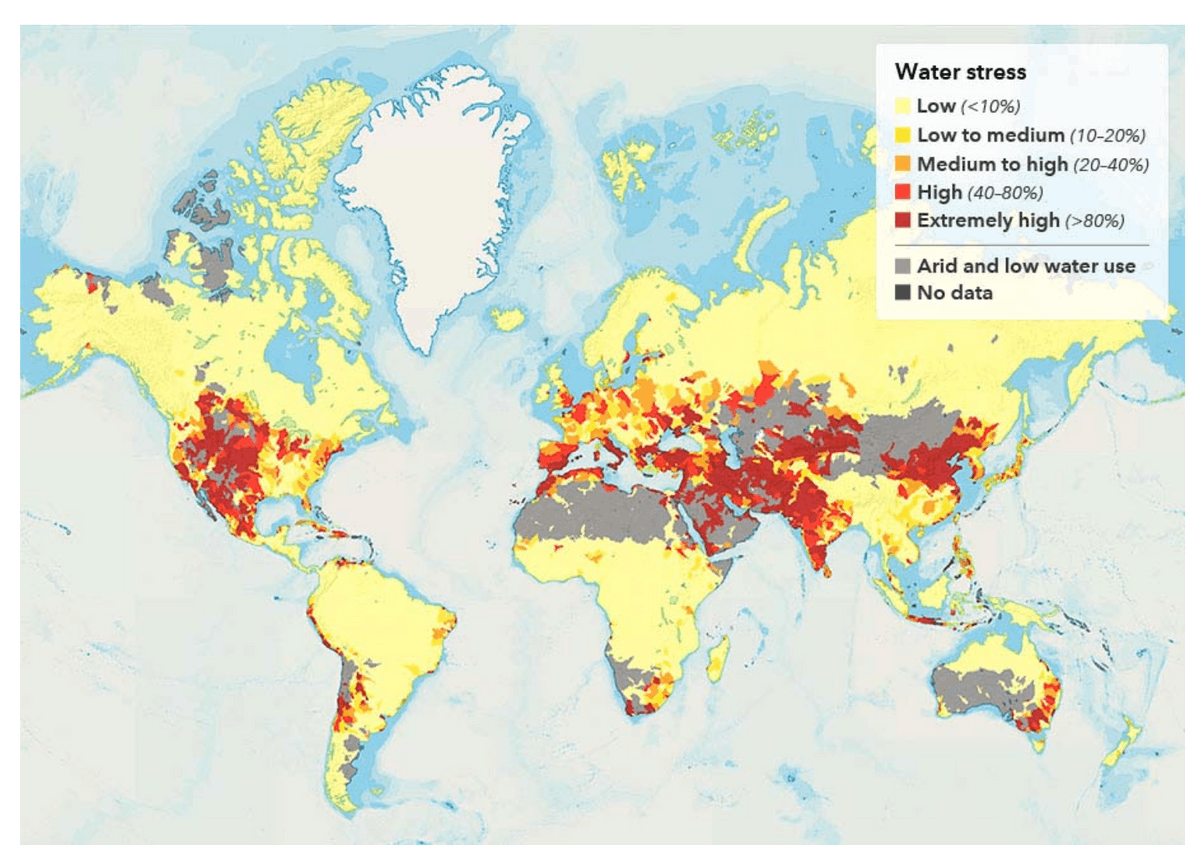Water stress is one of the most pronounced physical risks from climate change that investors must consider. Droughts and water scarcity are idiosyncratic events with a proven ability to stop or reduce production quickly, cause late-stage project cancellations, and ultimately alter industry market share. Within water-intensive industries, understanding how companies manage their water supplies can be a key factor in anticipating their longer-term performance.
The semiconductor industry provides a good case study: it is among the most water-intensive industries on a relative basis, and several ‘hubs’ where chips are produced have been exposed to severe, long-term drought in the past. In response, several leading companies have found new approaches to water management, allowing them to recycle upwards of 90% of water used and reinforcing long-term sustainability of operations.
Water risk becomes material when companies operate in high-stress zones

Data accessed March 18, 2022. The chart shows projected water stress levels for 2030 in a "business-as-usual" climate change scenario, under which global greenhouse gas emissions continue growing at their current pace. The World Resource Institute defines water stress as the ratio of total water withdrawals to available renewable surface and groundwater supplies. Higher water stress levels indicate more competition among water users. World Resource Institute Aqueduct, OpenStreetMap.
Interested in finding out more?
